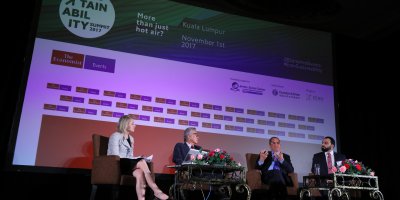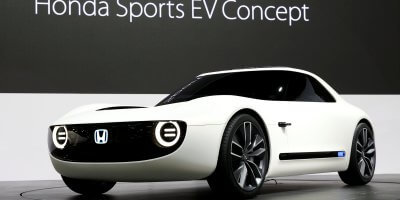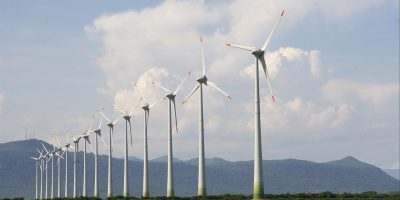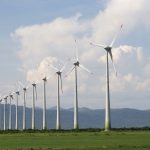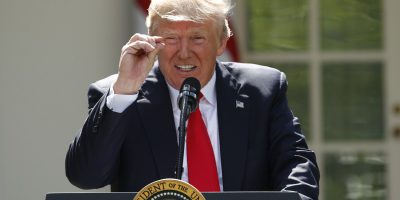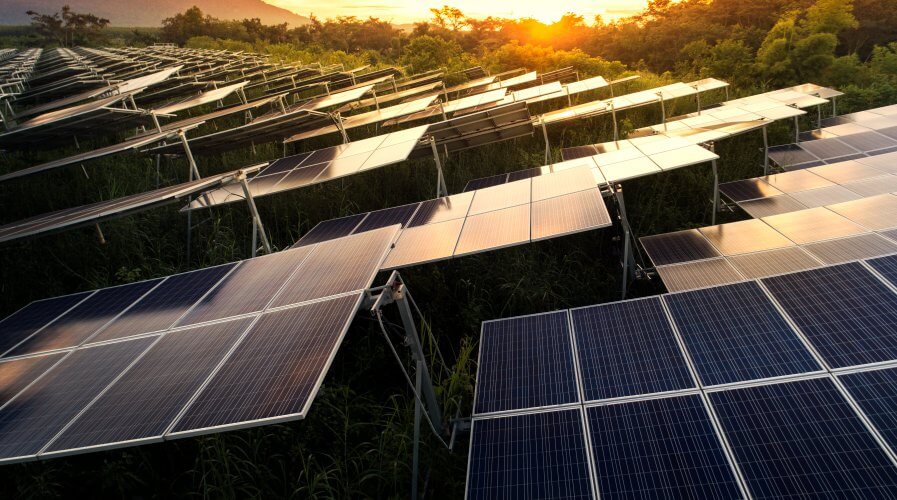
Solar power used to be a premier form of electricity but it’s a different story now. Source: Shutterstock
China changes the game for solar, turns it lucrative
JINKO SOLAR is the biggest producer of solar power in the world, representing around 12 percent of the entire industry. Last year, the company reached a high watermark for solar shipments, totaling 6.5 gigawatts (GW) in China alone.
For context, a single gigawatt unit has the ability to power as many as 700,000 homes per year, assuming each home uses around 11,000 kilowatt hours (kWh) annually — that’s 4.6 million homes that are being powered by the force of a single company’s yearly sales. This coming year, they’re expecting to touch 10GW worth of shipments.
Over just the last year, the company smashed through four world records for their solar modules’ energy efficiency, and currently have investments in the Middle East and Southeast Asia, totaling as much as 1.5GW in overseas manufacturing or production sites. Penang, a state in northern Malaysia, is home to the company’s largest overseas site.
The rise of solar energy as a viable replacement for coal has sparked a revolution in the way that the world thinks about energy. China has taken the lead in driving the innovation and growth of this once-niche space, partly as a response to the retreat of American leadership but also in response to the outsized business opportunity presented by the falling costs of solar.
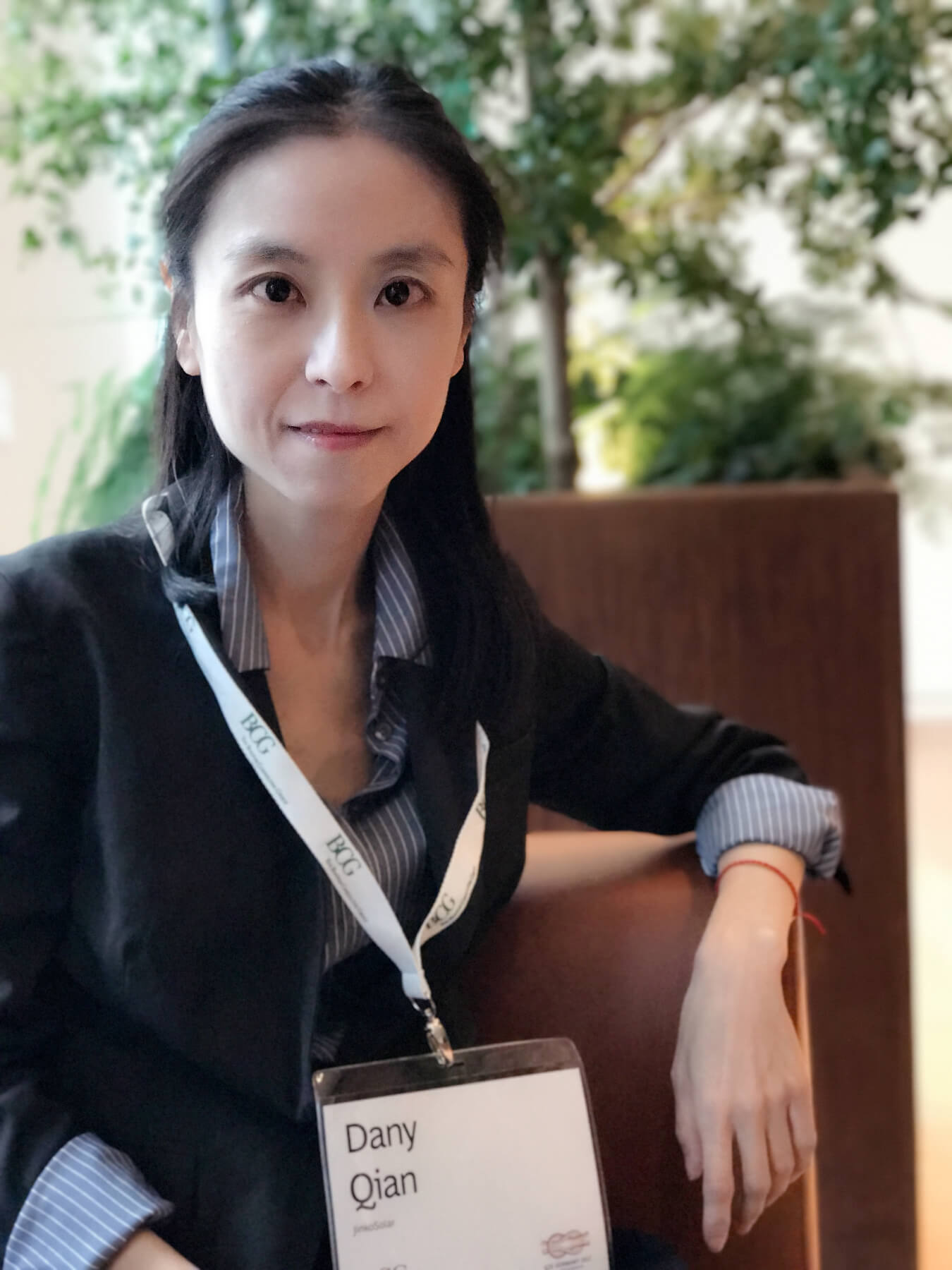
Dany Qian. Source: Jinko Solar
Jinko’s success in the industry is the product of a long struggle to push the envelope on the technology. Founded in 2006, the company began producing solar cells in 2009, and later started manufacturing solar modules in 2010. Today, their client list spans utilities operators, commercial players — this includes factories and manufacturers — and residential. The former makes up the majority of Jinko’s clients, while the latter is the smallest.
The world is waking up to the importance of shifting to renewable energy, and it’s become a bit of a windfall for players in the space.
Dany Qian, the vice president of Jinko Solar, told Tech Wire Asia that no one was talking about solar a decade ago, making the industry prime for the company to dominate.
Qian is a veteran of the industry, and has witnessed the peaks and troughs of solar as a viable source of power. Alongside her role in Jinko, Qian is very active in the advocacy scene for renewable energy, and was the sole representative of the solar industry during the landmark Paris Climate Treaty talks.
Tech Wire Asia spoke to Qian at the recent Sustainability Summit Asia organized by The Economist. She shares her views about where she thinks the solar industry is going, what it has achieved, and what lies ahead for the future.
When did Jinko solar and other corporations in the renewable energy space realize that this problem could be a viable business opportunity?
I think recently, more and more [people and businesses] in China are recognizing this and are being made aware of its benefits. Solar and renewable energy are not only about the emissions, it’s a way to make electricity and to make jobs.
What are some key milestones that we can point to as industry growth? What are some tangible ways we can think about this progress?
Ten years ago, no one was talking about solar or renewable energy. It was a very premier form of electricity that very few people could afford. Now it’s a very different story. For example, the current price that we quote in Abu Dhabi is US$0.02.42 per kWh, which is almost a third of the local cost of coal power.
In more and more regions, we’re already seeing parity between the two, meaning that solar power is much cheaper than coal-fired power. China has rich coal resources, which makes it cheaper for us, but other countries have to import their coal. This has allowed us to be able to export a lot more solar power panels.

Coal fired power is now at parity with solar power energy. Source: Shutterstock
Currently, it is very difficult to identify milestones because the technology has improved so fast. This year, Jinko Solar has already broken four world records in terms of our panels’ energy efficiency, so it’s very difficult now to say what the milestones are.
In the future, we will probably be talking a lot more about the deployment of solar power, which is very important. In terms of deployment, we are going to see a lot more innovation, with regards to how solar integrates with electric cars, charging stations, with wind as a supplementary source (Qian said that Jinko is currently working with domestic companies on ways to bring their tech to electric vehicles).
The most significant bottleneck for solar is that it cannot work around the clock the way that coal does, it only works for four or five hours a day. So the problem with infrastructure is how do we transmit it?
The second issue is storage, and when I say “storage” I don’t mean batteries, which is completely different as it is small capacity. “Storage capacity” for us means electricity that is stored at megawatt and gigawatt hour levels. So, how the technology works in this aspect is important, it’s very innovative. The prevailing trend [is that] China has shifted significantly from manufacturing to deployment.
What do you think has triggered the change in how people think and consider solar power?
The first is cost. Thanks to the government’s ingenious policies, we’ve managed to spend a lot in terms of research and development, and manufacturing. The cost is quite competitive now. I think that the Chinese government will continue setting incentives in the solar industry to further drive down the cost and make it more economically sensible.
Secondly, China has increasingly decentralized solar. In the past, solar was only relevant on a utility scale; it needed the transmission infrastructure in order to distribute it. In the future, it will be a different story. Every factory rooftop will be installed with solar modules to make electricity. We can supply and generate energy quite independently. We see these as critical milestones.
In the future, these corporate sustainability goals will not be just an administration comment from the government. Businesses will do it just because it’s cost effective, and they will not rely on the national grid. They can produce it for themselves and they can participate in electricity trade by selling the excess.
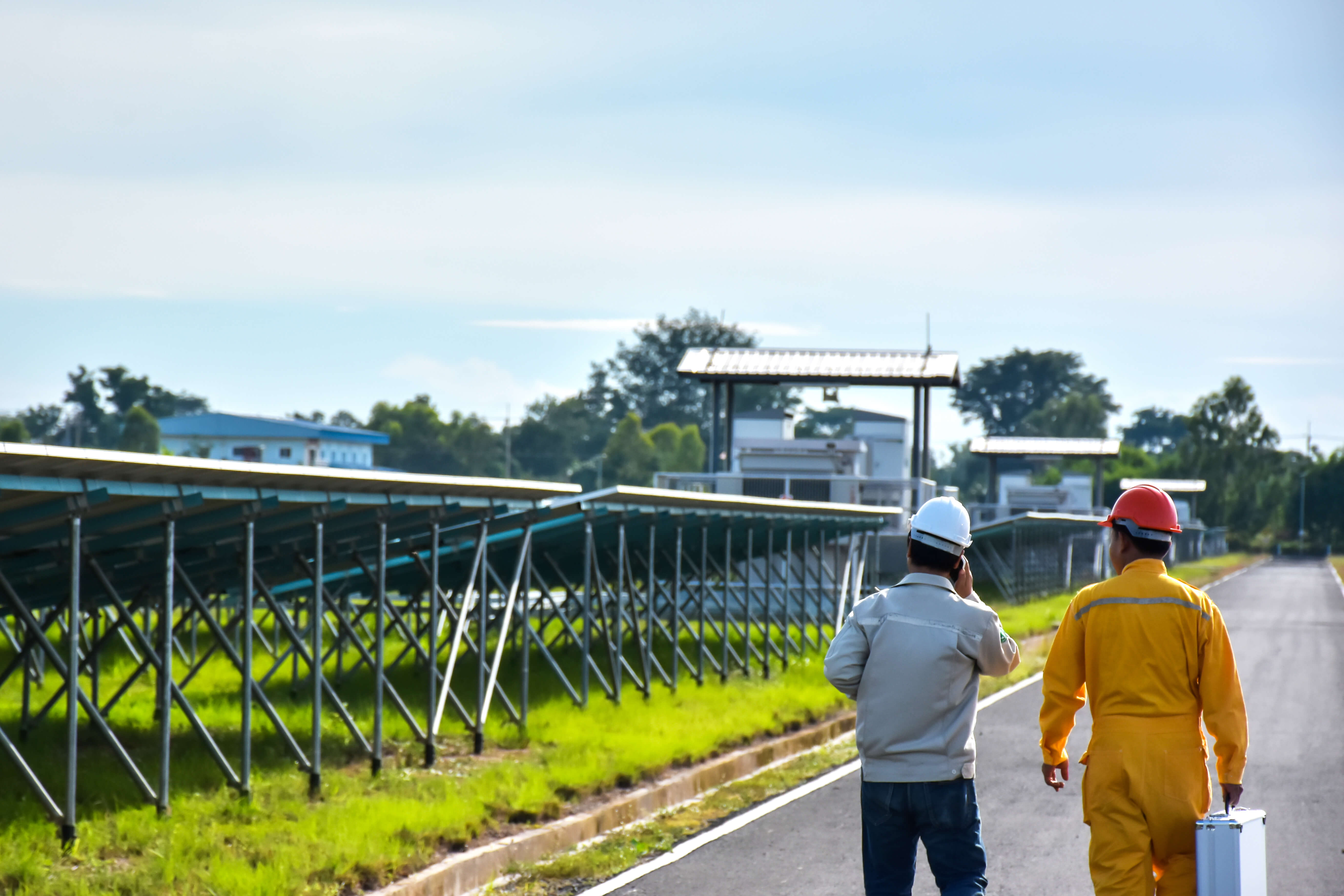
Solar manufacturing has now moved on to figuring out issues of deployment and storage. Source: Shutterstock
Let’s talk a bit about how China’s government has helped drive the growth of the renewable energy industry. Could you tell me a bit about the shift in policy thinking around solar, and what has been the “China effect” on the solar industry?
In terms of electricity generation, it used to be that 73 percent of all energy was provided by coal power, 3 percent by wind, hydro contributed 18 percent, nuclear and gas made up 2 percent each, and solar is only comprised of 1 percent.
Now, according to the IEA and the country’s national energy admin, by 2030, coal production will halve from 73 to 42 percent. Wind will go (sic) from 3 to 12 percent, and solar (sic) from 1 to 6 percent. Suffice to say, solar is still a tiny slice of the pie, but the size of the pie is now different.
When China moves from 1 to 6 percent solar power usage, that’s massive. The same goes for coal. China’s principle is that once they set big goals, they are able to make them.
China’s new policy can benefit the world. China is very well organized in taking on big chunks of industry, so other countries such as the United States can have a model of how you can rethink in line with how China deals with R&D, manufacturing and deployment. It gives them examples of how to do the same if they want the economic, environmental and security benefits that China has.
As our President Xi [Jinping] said, China’s investment in renewable energy is already paying off. In the wake of the US pull back, China is ready to take over their role on the international stage. China is not short of capital. China is now willing to export its capital and expertise, talent and policy implications to other countries. You help them to build up their own solar clusters, to improve their transmission infrastructure.
China’s growth will stimulate the private sector to invest in other countries, such as those in Southeast Asia, either in terms of increasing production size or directly injecting money into renewable energy. I think in the future, China can do lots.

Honda Motor displays Honda Sports EV Concept during media preview of the 45th Tokyo Motor Show in Tokyo, Japan. Source: REUTERS/Toru Hanai
How has solar affected how industries are currently functioning?
Solar can have a big impact for lots of industries that consume a lot of energy, such as paper and building material manufacturers, or aviation, or the steel industry. These industries use a lot of electricity. Solar is so cost effective and competitive, that they can think about installing panels in their idle rooftops and shift to using renewable electricity. They can rethink how they generate and use electricity in order to become more green.
Do you expect the number of commercial players in your client base to increase?
Yes. This year [China] launched a cap-and-trade program, which covers at least six of the biggest carbon producing industries including paper, steel, metallurgy, aviation, machinery and so on. They will get electricity quotas, meaning they have limited use of coal-fire electricity. Under this scenario, these industries will take the lead or pioneer other industries to take on renewable energy sources
What are some future obstacles that you foresee will take shape in the industry in the coming years?
Deployment is very, very critical, so first is the transmission infrastructure speed up. For example, in China we have built that 15,000km ultra-high-voltage direct-current transmitter just to solve the problem of the dumping the excess wind and solar electricity.
Other technological developments include storage, electric cars, so on. The improvement of these technologies will help solar solve its problems, such as its inability to work 24 hours a day.
The third is capital. Lots of these developments are still lacking capital. I hope that China can lead the way and pioneer to help stimulate the deployment in other countries.
READ MORE
- Ethical AI: The renewed importance of safeguarding data and customer privacy in Generative AI applications
- How Japan balances AI-driven opportunities with cybersecurity needs
- Deploying SASE: Benchmarking your approach
- Insurance everywhere all at once: the digital transformation of the APAC insurance industry
- Google parent Alphabet eyes HubSpot: A potential acquisition shaping the future of CRM

